Abstract
It is argued that the apparent constancy of the rate of molecular evolution may be an artifact due to the very slow rate of evolution of individual amino acids. A statistical analysis of protein evolution using a stationary point process as the null hypothesis leads to the conclusion that molecular evolution is episodic, with short bursts of rapid evolution followed by long periods of slow evolution. Such dynamics are incompatible with the neutral allele theory and require a revision of the standard interpretation of the molecular clock.
Full text
PDF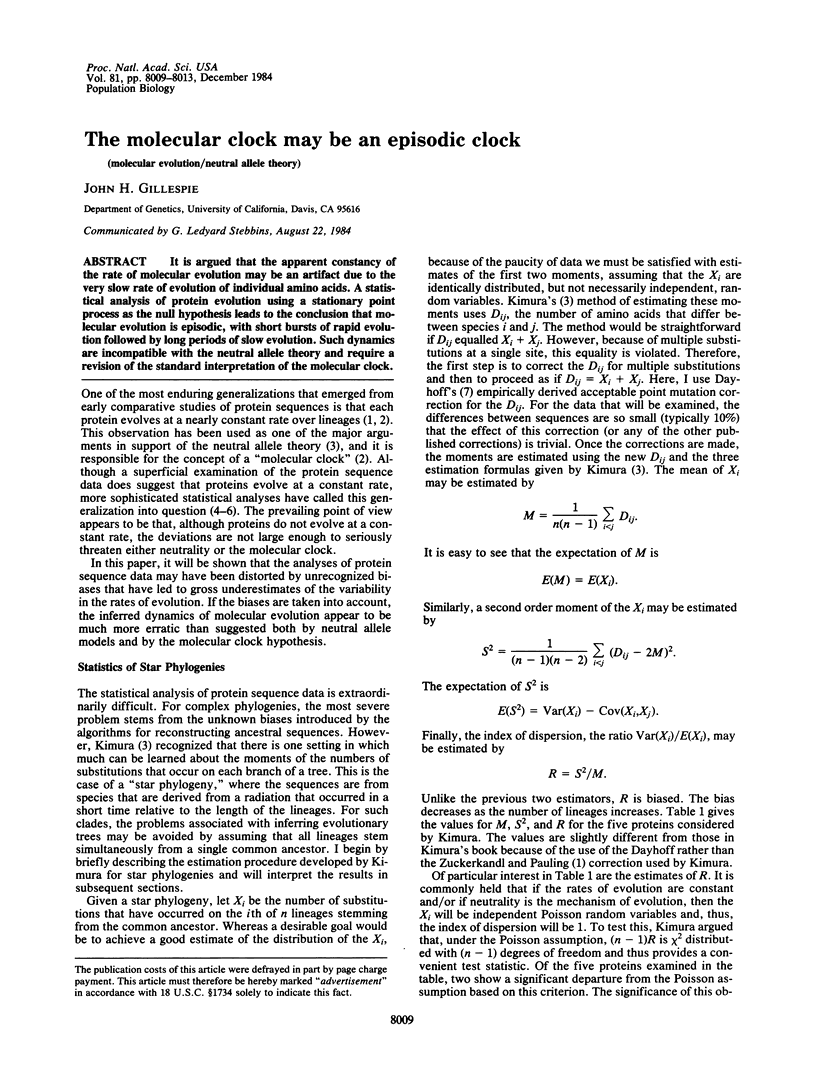
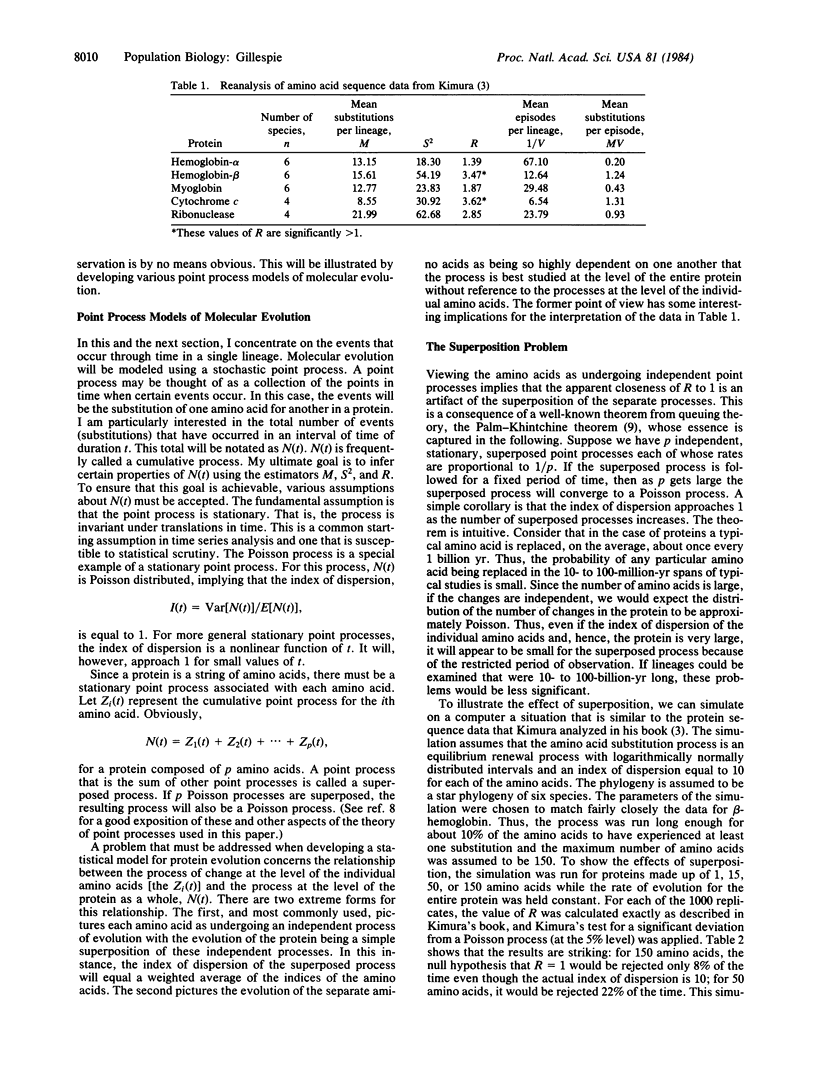
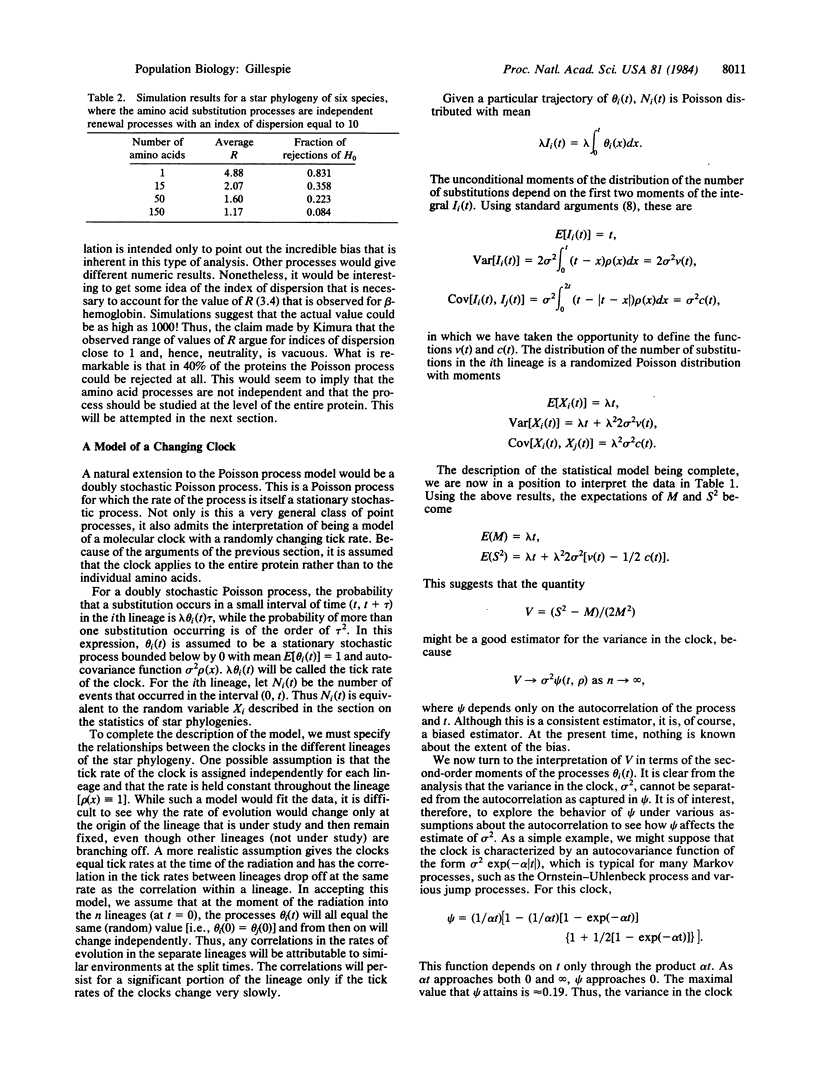
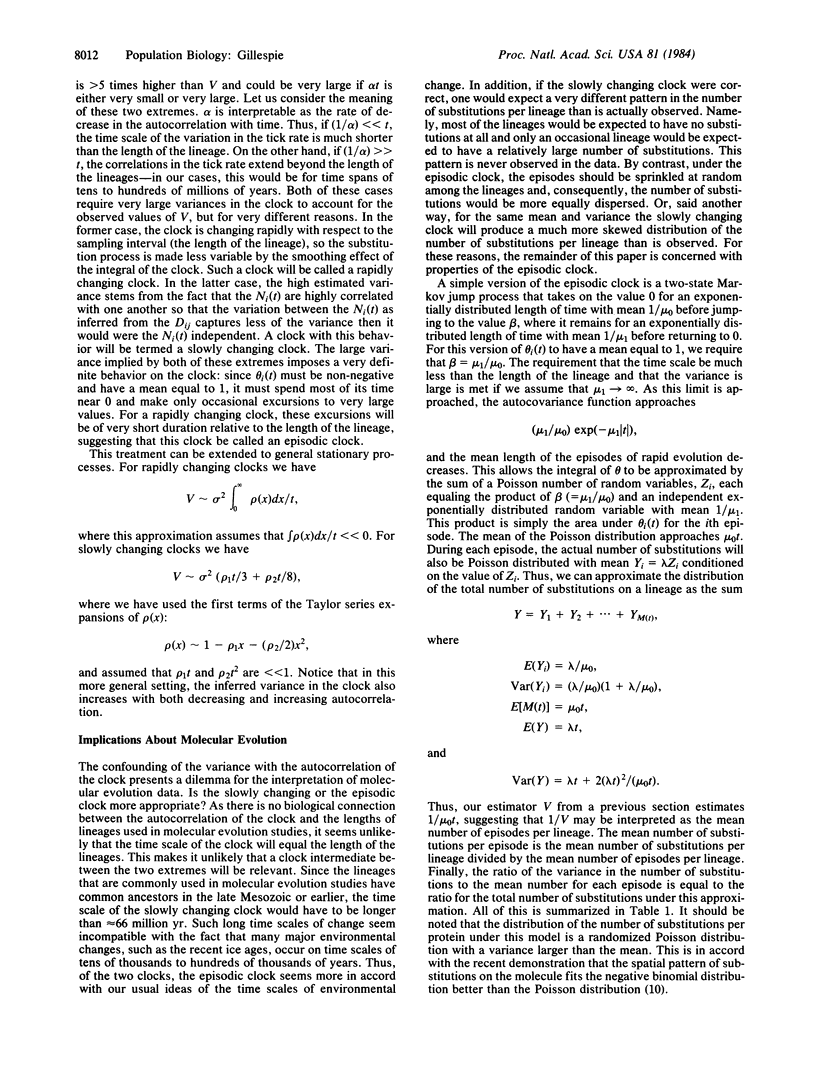
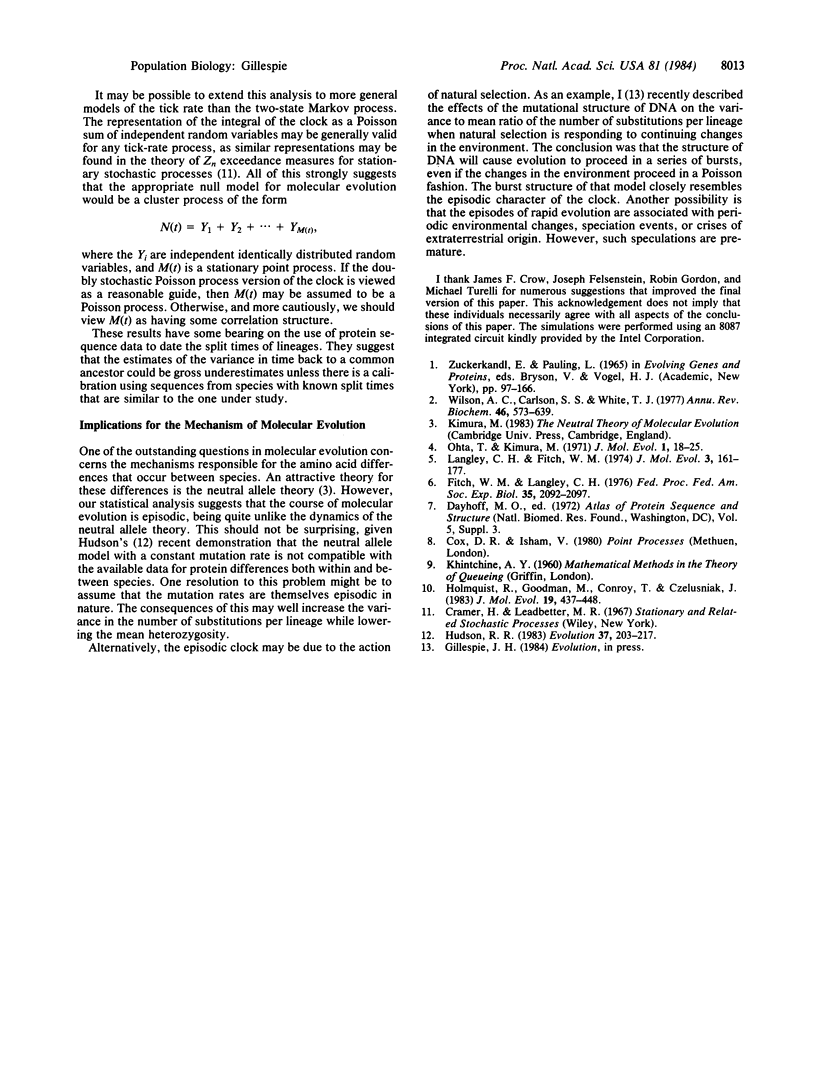
Selected References
These references are in PubMed. This may not be the complete list of references from this article.
- Fitch W. M., Langley C. H. Protein evolution and the molecular clock. Fed Proc. 1976 Aug;35(10):2092–2097. [PubMed] [Google Scholar]
- Holmquist R., Goodman M., Conroy T., Czelusniak J. The spatial distribution of fixed mutations within genes coding for proteins. J Mol Evol. 1983;19(6):437–448. doi: 10.1007/BF02102319. [DOI] [PubMed] [Google Scholar]
- Langley C. H., Fitch W. M. An examination of the constancy of the rate of molecular evolution. J Mol Evol. 1974;3(3):161–177. doi: 10.1007/BF01797451. [DOI] [PubMed] [Google Scholar]
- Ota T., Kimura M. On the constancy of the evolutionary rate of cistrons. J Mol Evol. 1971;1(1):18–25. doi: 10.1007/BF01659391. [DOI] [PubMed] [Google Scholar]
- Wilson A. C., Carlson S. S., White T. J. Biochemical evolution. Annu Rev Biochem. 1977;46:573–639. doi: 10.1146/annurev.bi.46.070177.003041. [DOI] [PubMed] [Google Scholar]


